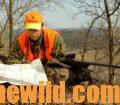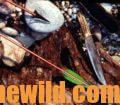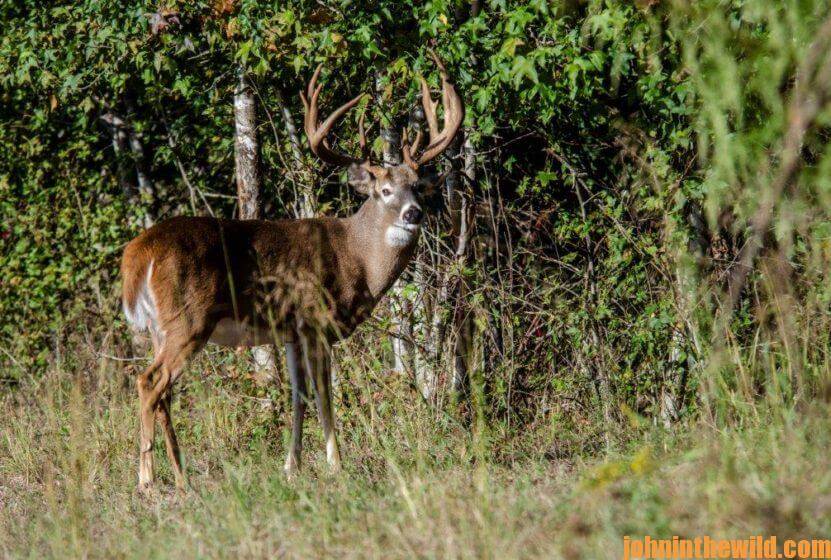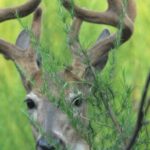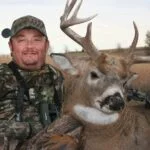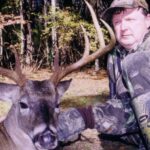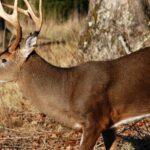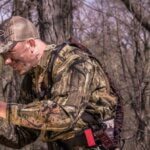Editor’s Note: During the last couple of weeks of deer season, if you haven’t taken your buck, what can you do to insure your success? How can you bag the biggest buck of the season? At this time of the year, the older bucks know more about what you’ll do than you do. To take them, you must do the unexpected.
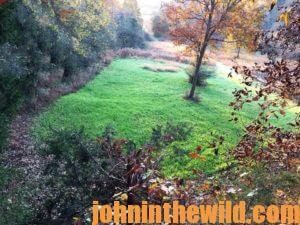 Most sportsmen spend their time each season attempting to determine what the deer will do, and when and where they’ll do it. The average hunter wants to know where a buck feeds and beds, which trails he uses to go between his feeding and bedding, what the locations are of any scrapes, and where the buck most likely will meet his does. Many of the articles written tell you if you know these factors, you will have more opportunity to take a deer.
Most sportsmen spend their time each season attempting to determine what the deer will do, and when and where they’ll do it. The average hunter wants to know where a buck feeds and beds, which trails he uses to go between his feeding and bedding, what the locations are of any scrapes, and where the buck most likely will meet his does. Many of the articles written tell you if you know these factors, you will have more opportunity to take a deer.
However, if you want to successfully hunt deer, especially at the end of the season, pattern the hunters, not the deer. If you’ll keep a logbook all season of when the hunters walk into the woods, where they go, and when they come out of the woods for lunch, return to the woods for the afternoon hunt and leave the woods again for the day, you’ll find gap times when most sportsmen don’t hunt, often between 11:00 am and 2:00 pm. Many hunters believe deer don’t move in the middle of the day. Also at this time, the hungry and tired hunters, who have awakened before daylight, want to eat and take naps before they return to the woods for the afternoon hunt.
 If you study the outdoorsmen in the area you hunt, you’ll soon realize the deer experience the least amount of hunting pressure in the middle of the day. Therefore, on the last day or two of hunting season, sleep in, and don’t get up until 8:00 or 9:00 am. Be at your stand about10:00 am. Determine to stay there until at least 2:00 pm. During the late season in most states, especially where you find heavy hunting pressure, the bucks will move during daylight hours in the middle of the day more often than at any other time of day.
If you study the outdoorsmen in the area you hunt, you’ll soon realize the deer experience the least amount of hunting pressure in the middle of the day. Therefore, on the last day or two of hunting season, sleep in, and don’t get up until 8:00 or 9:00 am. Be at your stand about10:00 am. Determine to stay there until at least 2:00 pm. During the late season in most states, especially where you find heavy hunting pressure, the bucks will move during daylight hours in the middle of the day more often than at any other time of day.
Out-Hunt the Green Field Hunters:
Today across the country, sportsmen plant green fields, not just to feed the deer but to concentrate the deer and make them easier to harvest. You can sit in a shooting house over a green field in rainy or cold weather and remain warm and dry. If a deer comes onto the field to feed, you can take him. Shooting houses usually have comfortable chairs to sit in and plenty of places to put all your stuff. However, the more often people hunt a green field from the shooting houses, the less likely your chances are of bagging a trophy-sized, late-season buck at that green field. Instead, don’t sit in a shooting house where all the other hunters have. Take a climbing tree stand to the back side of the green field, find the trails the deer use to come to the green field, and set up your stand 100 to 200 yards in the woods away from the green field. Older age-class bucks will come to the green fields at night to feed and breed. But generally, they’ll hold down the trail 100-to 200-yards from the green field, until darkness prevents a hunter sitting in a shooting house to take a shot.
Deer quickly learn what shooting houses represent, and that hunters likely will sit in them, especially late in the afternoon. The deer understand that if they wait until dark, they’ll find the hunters gone and the green field safe. Oftentimes at the end of the season after the bucks already have learned to stay away from the green fields until after dark, you can intercept a trophy buck in the woods along trails leading to the green field before dark.
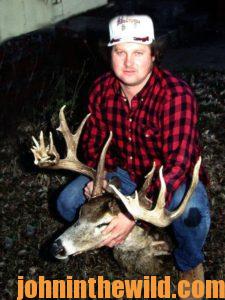 To take a buck of a lifetime at the end of a season . . .
To take a buck of a lifetime at the end of a season . . .
* don’t hunt where everyone else hunts,
* don’t hunt at the times everyone else hunts,
* use strategies no one has utilized all season,
* put your stand in places where no one has hunted all season, and
* move into the deer’s bedding area you’ve avoided during the season.
You may find end-of-the-season hunting for big bucks relatively easy, if you’ll use these last-resort tactics.
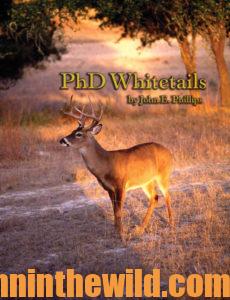 To learn more about hunting for deer, check out John E. Phillips’ deer-hunting book, “PhD Whitetails: How to Hunt and Take the Smartest Deer on Any Property,” available in Kindle and print and soon to be available in Audible at http://amzn.to/WIEUoo. You may have to copy and paste this link into your browser. (When you click on this book, notice on the left where Amazon says you can read 10% of the book for free).
To learn more about hunting for deer, check out John E. Phillips’ deer-hunting book, “PhD Whitetails: How to Hunt and Take the Smartest Deer on Any Property,” available in Kindle and print and soon to be available in Audible at http://amzn.to/WIEUoo. You may have to copy and paste this link into your browser. (When you click on this book, notice on the left where Amazon says you can read 10% of the book for free).

